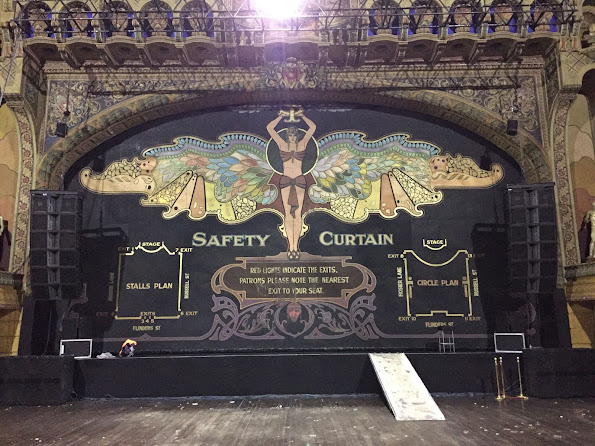Carry On... #Don't Trust Anyone over 25
Please note that this week's film has been rated 12 in the UK.
Last week's film (Logan's Run) is a prime example of a science fiction film that was emphatically a product of the era in which it was made. If anything, its very relevance proved to be its vulnerability. By the time it reached the theatres in 1976, many of the social trends it was responding to were already starting to fade.
That may also be why attempts to produce a remake have consistently failed to make any headway. Hollywood studios have repeatedly attempted to reboot Logan's Run over the decades, and at least six different directors have embarked on such a project over the last 30 years. Multiple writers have been approached, and in some cases have written complete screenplays - but to no avail. Logan's Run has remained stubbornly and imperviously un-remade.
If you think about it (and I have, trust me) remaking Logan's Run is easier said than done. After a decade of hippie culture, youth rebellion, "Don't Trust Anyone Over 30" and flag burning, Logan's Run was an obvious reaction to a specific moment in history.
But that moment came and went. How do you remake such a film for an audience that never experienced these things?
Answer: Do it at night, when no one is looking.
Science fiction author Harlan Ellison (who appears to have enjoyed suing people recreationally, when he wasn't busy assaulting other science fiction writers) briefly filed a lawsuit against writer/director Andrew Niccol over the 2011 film In Time; accusing him of plagiarising Ellison's 1965 short story "Repent, Harlequin!" Said the Ticktockman.
The lawsuit was quickly dropped (Ellison had apparently filed the suit before he bothered to watch the film) once it became obvious that In Time had nothing to do with anything that had ever emerged from the head of Harlan Ellison.
If In Time owes a debt to anything, it is to Logan's Run. Both films are set in a future where life spans are artificially limited (30 years in Logan's Run, 25 in In Time).
Citizens in both films are implanted (from birth) with devices that indicate the remaining time they have.
Both protagonists are pursued by their respective society's "enforcement" class (the Sandmen in the former; the Timekeepers in the latter).
Both films feature a young couple who are drawn to each other as they make their escape from the restrictions of their society;
And both films are absolutely intended as metaphors for the era in which they were produced.
At the very beginning of this current film series I discussed writers and film-makers who extrapolate developing trends in society to their logical (or illogical) conclusions. (If this particular trend carries on, where might it lead?)
Writer/director Andrew Niccol borrows many elements from Logan's Run, but the story he tells has nothing to do with hippies, Yippies or the youth rebellion. In Time was released in 2011, when US society was facing an entirely new set of challenges.
In Andrew Niccol's story, humans of the future have been genetically engineered to stop aging when they turn 25. From that point onward, they will live as long as there is more time on their internal clocks, and that time must be acquired. Time itself has become currency, to be earned, spent... or stolen.
A Sign of the Time
According to Forbes, the 400 richest Americans in 2010 had a combined net worth of $1.37 trillion, which is more than the total worth of 50% of the entire population. In other words, four hundred individuals held more money than the combined wealth of 155 million Americans.
This financial trend has been steadily increasing over the last several generations, and the effects are becoming more pronounced.
There are now communities in the US that do not have access to safe drinking water. College graduates can spend their entire lives attempting to repay their student loans, and may never be able to afford property of their own. Teachers are forced to take second (or sometimes third) jobs to make ends meet; often working nights as Uber drivers or Amazon couriers, while at the same time a handful of individuals are recreationally launching themselves into space, because what else can you do with 200 billion dollars?
In In Time, a few wealthy individuals are worth millions of years, and can effectively live forever. Everyone else meanwhile tries to keep their clocks from running out before the end of the day.
According to the National Institute of Health, the average life expectancy of the wealthiest 1% of society is currently almost 15 years longer than that of the poorest 1%.
Logan's Run was a product of the "Don't Trust Anyone Over 30" generation. Of course it's impossible to remake today. In modern society, you can live as long as want; but you have to pay for it.
In Time takes many of the constituent parts of Logan's Run and "remixes" them to construct a very powerful metaphor for the modern world. The 1960s had its own problems. These are the problems that are important in 2011.
We will screen In Time at 7.30 on Thursday, the 7th of December at the Victoria Park Baptist Church.























Comments
Post a Comment